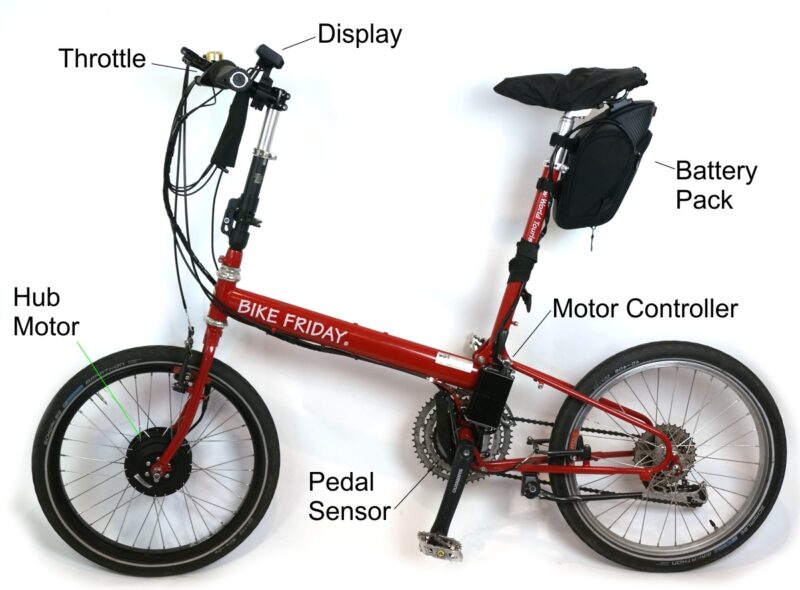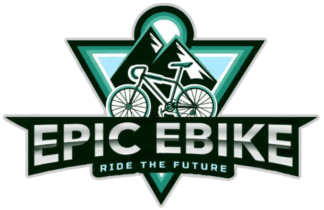
In an electric bike, there are two types of motors. One is a rear mounted motor and the other is a mid-drive motor. The rear-mounted type is used in most bicycles and is mounted on the back of the wheel. On the other hand, a mid-drive type is located in the middle of the bike’s frame and is a great option for those with limited space.
Rear-mounted motor
Electric bikes come in a variety of forms. One of the most common options is a rear-mounted motor. It is a simple solution to achieving torque and acceleration safely. But, it also has its downsides.
The most obvious is that it takes up space and may be more difficult to lift over curbs. That said, it offers power, efficiency, and durability, as well as a reassuring feel. In addition, it is easier to hide than a front-mounted unit.
Rear-mounted motors can be up to 750 watts. This means they can provide plenty of torque for hill climbs and downhill riding. They can be hidden in the gears at the back of the bike, making them a cinch to disguise. And, unlike front-mounted motors, they aren’t a pain to repair if they malfunction.
There are several other types of electric bike motors, including geared and friction driven ones. These are less common than the hub-driven models. However, they are surprisingly affordable, especially if you’re looking to swap them between different bikes.
One of the most interesting features of a mid-drive motor is that it takes advantage of the natural torque generated by the drivetrain. This means it is the best all-round e-bike motor. With the right pedaling, it will give you a smooth, stable ride with minimal wear on your drivetrain. If you’re interested in a mid-drive model, make sure you choose a brand that’s known for its innovative sensor technology.
As for the cheapest and easiest way to install a motor, you can usually get one bolted to the fork brake mount. Other common locations are above the seat trays and below the chainstays. Even then, you will need to invest in a battery pack for backup.
The other big thing that a geared motor does is produce an audible whirring sound. Typically, the whirling signifies that the gears spin many times to turn the wheel. Another benefit of the geared motor is that it can maintain high speeds even at leisurely speeds. Depending on the bike, this could be worth the additional weight and complexity.
For a newcomer to e-bikes, the smallest and most visible electric motor might be the tiniest thing. A rear-mounted motor, on the other hand, is much more substantial. Because of its heavier weight, you’ll find that your biking experience will be more challenging, even though it’s faster.
If you’re interested in a rear-mounted motor, you’ll want to keep an eye out for the most important functions. For instance, you might be surprised at the number of ways you can change the way your bike feels, from putting a battery in the rear to using a hub-driven motor. By shifting the position of the motor, you can reclaim space for other equipment or improve the handling of the bike.
Mid-drive motor
Mid-drive motors for electric bikes are becoming a popular choice. These motors provide a number of benefits and are often more powerful than hub-driven motors. However, they require more work and maintenance.
One of the main advantages of mid-drive power systems is their ability to make the bike more efficient. They are particularly useful when you’re going up hills and carrying a lot of weight. They’re also ideal for cargo/delivery bikes, hybrid road bikes, and mountain bikes.
Mid-drive motors can also be more efficient than their hub-drive counterparts. This means that they’ll produce more power, even when you’re pedaling at low speed. This translates to longer battery life, faster acceleration, and higher range per charge. Generally, you’ll find that mid-drive eBikes are more stable and provide a more natural pedaling experience.
Another advantage is that they’re easier to maintain. Because they’re positioned close to the frame, they have less weight. The weight of the motor also helps to reduce drag, making the bike more efficient and less difficult to pedal. Nevertheless, a rear-mounted motor can result in a back-heavy bike, which can be hard to manage on technical terrain.
Additionally, they’re more expensive than hub-drive motors. As a result, they’re more common on higher-end models. A mid-drive motor is usually mounted in the middle of the bicycle, near the bottom bracket. Most mid-drives are equipped with a torque sensor, which lets the motor respond to the amount of pressure you put on the pedals. This is beneficial because it can help predict when you’re about to shift gears.
However, some riders don’t like the torque sensor. It can be hard to get used to, and can be problematic for some. Fortunately, mid-drives have gotten better in recent years. Some have incorporated more advanced sensor systems to improve their performance.
Hub-drive motors were the favored eBike motors of the past. Although they’re still popular, many eBike manufacturers have moved toward mid-drives. In fact, the shift is expected to accelerate in the next decade.
Mid-drives are also more compact. For example, the M620 ‘Ultra’ motor is much smaller than the M620 ‘Revolution’. Nonetheless, they are still large enough to deliver 1500W of peak power, making them suitable for heavy-duty e-cargo use.
One drawback to mid-drive motors is that they require a custom-made frame. While this can increase the cost of the bike, it is worth it because it’s more durable and requires fewer repairs. Even more importantly, the mid-drives’ placement in the middle of the bike results in a more balanced, efficient ride.
Mid-drive motors are a great option for eBike owners looking for a more powerful and efficient way to ride. The best eBikes tend to have these motors, but you can also retrofit a motor for your own bike.
Crank drive motor
The most common electric bike motor is the hub drive. This type of motor is simple to understand and relatively easy to maintain. It has a simple design, involving a shaft that rotates around a stator, and an electromagnet that repels the rotor’s electromagnets.
Mid-drive motors, on the other hand, are a bit more complex. Their function is similar to a hub drive system, but with a few extra bells and whistles. They are usually located in the center of the bicycle, near the bottom bracket. Because they are integrated with the cranks, they have a more direct effect on the pedaling mechanism.
A mid-drive system is more efficient than a hub drive system. The oomph of a mid-drive system comes from a variable-speed ratchet mechanism inside the motor. Using a ratchet mechanism increases the torque output of the motor, providing improved climbing and load capacity.
On the downside, a mid-drive motor is more expensive and less efficient than a hub motor. A mid-drive motor also requires more maintenance. While a hub motor does not require as much work, it will require more battery power to operate. Changing a flat tire on a hub motor can be cumbersome, especially in more difficult terrain. Lastly, a hub motor is harder to shift compared to a mid-drive motor. If you’re trying to figure out what kind of motor to purchase, it’s best to think about your riding style and the conditions you will be riding in.
There are other forms of e-bike motors, such as the belt drive and the geared hub. Each of these options provides a different level of performance and a different level of convenience. Belt drive and geared hub motors are typically the most efficient, but they are more difficult to change and service. Generally, they are not suitable for people who ride at higher speeds. Unlike the belt drive, a geared hub will not offer regenerative braking, which is the power generated by the bike during braking.
Although there are many types of e-bike motors, the most common are the hub and the mid-drive. Each has its own advantages and disadvantages, but in the end, the mid-drive is the best bet. With a mid-drive motor, you can maximize the performance of your bicycle with more range, a smoother ride, and a better braking system. But beware of a mid-drive motor’s limitations. One of the most notable is that it is harder to shift, requiring more power to turn your cranks.
Whether you choose a hub or a mid-drive motor, you should look for a high-performance unit that can handle the demands of your riding style. While a mid-drive motor may be more expensive, the benefits far outweigh the cost. And if you need to replace a tire, a mid-drive motor will be easier to remove and install.

